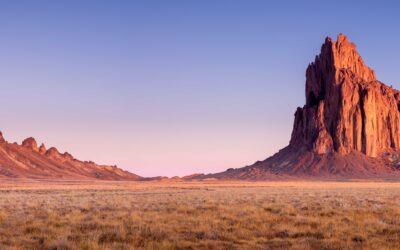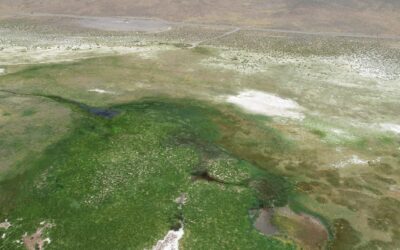Reposted from https://www.fs.usda.gov/research/pnw/news/releases/making-megafire-study-explores-why-some-wildfires-grow-fast-and-furious.
Photo courtesy of the National Interagency Fire Center.
Some wildfires grow much larger and a lot faster than others to become megafires. But why? As their name suggests, megafires are wildfires of extreme size with great destructive potential, which can make them especially challenging to manage. As megafires become more frequent in the Western United States, better wildfire prediction is needed to protect lives, property, and resources.
A recent study led by the USDA Forest Service’s Pacific Northwest Research Station explores why some fires turn into megafires by analyzing the effects of daily weather conditions. The findings can help fire managers anticipate which fires are likely to grow most rapidly and become megafires.
“Ours is the first study to systematically and quantitatively compare daily weather conditions with daily fire growth using multiple fires across the country,” said Brian Potter, research meteorologist at the station’s Pacific Wildland Fire Sciences Laboratory in Seattle, Wash. Along with Daniel McEvoy, researcher with the Desert Research Institute, Potter analyzed 40 fires that burned in California, the Great Basin, the Rockies, the Northwest, and the Southwest between 2002 and 2017.
The two researchers looked at a particular kind of megafire, which they called “fires of unusual size” or FOUS. These fires were 90,000 acres or larger and grew an additional 22,000 acres or more after at least one blowup, or growth, event. The scientists then compared these unusually large wildfires with smaller wildfires from the same general area. For each fire, they looked at the effects of prevailing dryness and daily weather conditions.
The scientists were surprised to find that the daily weather during these types of fires was, if anything, less extreme than during the smaller fires in their study sample. The FOUS tended to develop after two to four weeks of drier weather, which appears to prime them to grow much more when strong, dry winds occur.
More information:
- The largest wildfires developed because they responded to one- or two-day, high-wind events and preceding dryness more strongly than the other wildfires.
- It was how the wildfires responded to weather, not the weather itself, that appeared to differentiate the largest fires from other fires.
- The study’s findings suggest that when the previous couple of weeks have been dry, fire managers may need to be more aware than usual of infrequent high-wind days, even when overall conditions are mild.
Potter, Brian E.; McEvoy, Daniel. 2021. Weather factors associated with extremely large fires and fire growth days. Earth Interactions. 25(1): 160-176.


